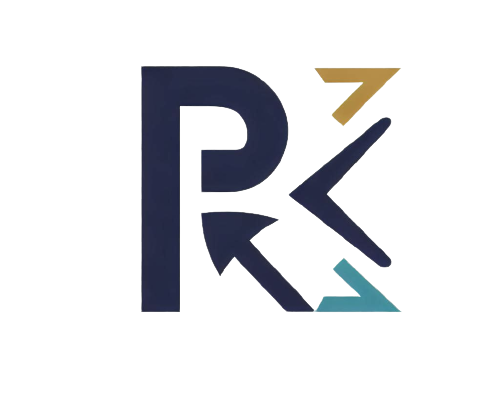What is a 404 Error?
A 404 error is like the internet’s way of saying, “Oops, I couldn’t find what you were looking for.” It occurs when a user clicks on a link or enters a URL, and the server, after a diligent search, throws its virtual hands up in the air, admitting defeat. The result? A page with the infamous 404 status code, signaling that the requested page doesn’t exist.
Why Do 404 Errors Happen?
Imagine trying to find a hidden treasure, only to realize that the treasure map has a crucial mistake. Broken or mistyped links are like flawed treasure maps in the digital realm. If a link is misspelled, outdated, or directs to a page that no longer exists, the server throws up its virtual hands in defeat, and the result is a 404 error. It’s as if the internet is saying, “Sorry, the treasure’s moved, and I can’t find the new location.”
 Websites evolve, much like a cityscape that undergoes urban planning changes. If a webmaster decides to delete or restructure pages, the URLs associated with those pages may change. If a user tries to access the old URL, the server can’t locate the page, resulting in the familiar 404 error. It’s the digital equivalent of encountering a construction zone where a road used to be.
Websites evolve, much like a cityscape that undergoes urban planning changes. If a webmaster decides to delete or restructure pages, the URLs associated with those pages may change. If a user tries to access the old URL, the server can’t locate the page, resulting in the familiar 404 error. It’s the digital equivalent of encountering a construction zone where a road used to be.
Remember that website you bookmarked ages ago? If the site undergoes changes, and you try to revisit it using an outdated bookmark, you might find yourself face-to-face with a 404 error. It’s like expecting your favorite store to be where it was years ago, only to discover it’s moved to a new location.
Users often rely on memory when typing URLs directly into address bars. But a simple typo can lead to a 404 error. It’s like intending to visit “example.com” but accidentally typing “exampel.com.” The server, ever diligent, can’t find what it’s looking for and responds with a 404 status code.
External websites may link to your pages, providing a virtual pathway to your content. However, if those linked pages are deleted or the URLs are altered without proper redirection, users clicking on those external links may find themselves in the land of 404 errors. It’s like following a sign to a destination that’s no longer there.
Sometimes, the culprit isn’t the content itself but the server hosting that content. Server issues or downtime can render pages temporarily inaccessible, triggering 404 errors. It’s like attempting to open a book only to realize the library is temporarily closed for maintenance.
Content Management Systems, while incredibly efficient, are not immune to human error. A simple mistake in updating or maintaining content, like accidentally deleting a page, can lead to 404 errors. It’s akin to misplacing a document in a filing cabinet.
Search engine crawlers tirelessly explore the vast expanse of the internet, indexing pages for search results. If a crawler encounters a broken link or a page that returns a 404 error during its journey, it can impact the search engine’s understanding of your website’s structure and content.
Components of a 404 Error Page
The star of the show is the 404 status code itself. It’s a three-digit number that communicates with your browser, telling it that the requested page is nowhere to be found. In HTTP language, 404 means “Not Found.”
Accompanying the status code is the error message. This is the server’s attempt at an explanation, often displayed in plain language, saying something like, “The page you’re looking for might be lost in cyberspace.”
A user-friendly 404 page doesn’t leave you stranded. It often includes navigation links or a search bar to guide you back to the main road of the website. Think of it as a detour sign pointing you to the nearest on-ramp.
The design of a 404 page varies from the bland default to the creatively customized. Some websites inject humor, graphics, or brand elements to soften the blow of the error. It’s like putting a friendly face on a detour sign – a bit of personality to make the experience less frustrating.
The Impact on User Experience:
Imagine setting out on a road trip, eagerly following the GPS directions, only to be met with a sign saying, “Road Closed.” Similarly, a 404 error disrupts the user’s journey, leading to frustration and confusion. Users expect a seamless experience, and encountering a dead-end page can feel like hitting an unexpected roadblock.
When faced with a 404 error, the natural reaction for many users is to hit the back button or close the tab. This contributes to bounce rates, a metric that measures the percentage of visitors who navigate away from a site after viewing only one page. High bounce rates can signal to search engines that users are dissatisfied with the website, potentially impacting its search rankings.
Picture walking into a store with a specific product in mind, only to be told, “Sorry, we don’t have that item.” In the digital realm, a website with frequent 404 errors can experience a loss of credibility. Users may question the reliability of the information and the overall upkeep of the site, affecting their trust in the brand or content provider.
Search engines aim to deliver the most relevant and user-friendly results. A website plagued by 404 errors can signal neglect, impacting its SEO performance. Search engines may interpret high error rates as a lack of attention to user experience, potentially affecting the website’s visibility on search engine results pages.
Users navigate websites with a specific goal in mind, whether it’s finding information, making a purchase, or exploring content. A 404 error disrupts this flow, diverting users from their intended path. It’s like taking a scenic route only to encounter a road closure, forcing a detour from the planned itinerary.
Every digital encounter contributes to the perception of a brand or website. Frequent 404 errors can create a negative impression, suggesting to users that the site may be outdated or poorly maintained. This perception can extend beyond the immediate frustration of encountering an error, influencing how users view the brand as a whole.
Trust is a cornerstone of user loyalty. When users repeatedly encounter 404 errors, it can erode their trust in the website. Trust is not easily regained, and users may be hesitant to revisit a site where their digital journeys are consistently disrupted.
Beyond the technicalities, there’s an emotional impact to consider. Users invest time and emotions in their online experiences. A 404 error disrupts this investment, creating a moment of disappointment and potentially influencing the user’s overall emotional connection with the website or brand.
